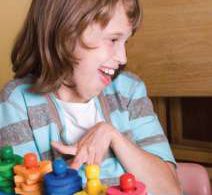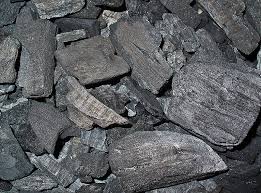Case study
Preliminaries
Date: 20/06/12
Name: Miss. MDS
Age/Sex: 12 yrs/Female
Religion: Hindu
Education: VIII std
Occupation: Student
Father:34 years
Mother: 30 years
Brother: One studying in V std
Diet: Vegetarian
Address: Shaskiya Colony, Latur
Chief Complaints
| Location | Sensation | Modalities | Accompaniments |
| Respiratory System | |||
| 1. Nose– Mucous Membrane | Irritation | A/F cold breeze2+ | |
| Onset: Since 5 to 6 months | Sneezing2+ |
< Early
Morning
|
|
| Duration: 10 Mins |
Paroxysmal2+
|
< Night
|
|
| Progress: Rapid |
Coryza2+ thin to thick discharge
Irritation
|
||
|
Frequency: Daily 4- 5 times
Intensity: Moderate
|
|||
|
2. Throat
Frequency: Occasional
|
> Antihistaminic |
Past History
Febrile Convulsions- Took Antiepileptic medication for 1 year
Family History
Mother had allergic rhinitis
Physical Generals
|
Appearance: Lean
Skin: Fair
Perspiration: General; Partial- Tip of Nose, no odor
Appetite and Hunger: Normal
Thirst: Normal
Cravings: Spicy3+, Junk Food2+
Aversion: Sweets2+
Stool: Unsatisfactory, Consistency: Normal, Urge: Normal
|
Urine: Normal
Sleep: Initially difficulty to sleep, afterwards sleeps normally; alert
Dreams: No dreams
Ailments from: Getting wet leads to coryza
Menarche: Not yet established
Thermal State: Chilly
|
Life Space Investigation
The patient, from a middle class family stays with her father who works as a senior peon at a Government office at Latur, her mother, a housewife and a younger brother studying in V standard. Her grandparents stay in the village away from her residence and she meets them occasionally. The family has good interpersonal relationship among them. The patient does not contribute in household work as physical exertion exhausts her and also she doesn’t like to work. She has average performance in academics. She forgets about her assignments and needs constant supervision from her mother for their completion. She gets exhausted after reading or writing one or two pages. She also forgets about her belongings in school and is scolded by her parents and teachers. After scolding she becomes angry but never retaliates. She likes studying Marathi and Maths, drawing and also likes to travel. She has fear of lightening, dark, ghosts, lizards, cockroaches, rats and cats. She avoids these fearful things and if exposed to these, she needs someone to be near her.
Examination Findings
General Examination
General condition: Fair
Temperature: Afebrile
Pulse: 80 /min
RR: 18 /min
Weight: 32 kg
Height: 138 cms
Nose: No discharge, Congestion
Tongue: Moist
Throat: NAD
Teeth: Normal
Systemic Examination
CNS: NAD
CVS: S1S2 Normal
R/S: Clear
P/A: Soft
* RR- Respiratory Rate, CNS- Central Nervous System, CVS- Cardiovascular System, R/S- Respiratory System, P/A- Per Abdomen
Case Processing
Disease Diagnosis
| Allergic Rhinitis |
Cause | Exposure to Cold |
| Effect |
Nasal mucous membrane irritation
Coryza: Thin to thick discharge
Sneezing: Paroxysmal
O/E- Nose: Nasal congestion
|
|
| Predisposing Factors | Heredity: Mother: Allergic Rhinitis |
Hahnemannian Classification of Disease: Chronic
Miasm
- Fundamental Miasm: Tubercular
Past History: Febrile convulsions
Family History: Mother had history of allergic rhinitis
- Dominant Miasm: Tubercular
Sensitivity at mental and physical level
Mental and physical exertion leading to exhaustion
Susceptibility: Moderate
Potency: 200 (Considering the moderate intensity of symptoms, level of susceptibility and miasmatic understanding)
Repetition: Infrequent- Chronic case having hypersensitivity at mind and body level.
Selection of Repertory: This case has qualified mental and physical generals hence Kent’s repertorial approach has been selected.
Repertorial Totality with Classification and Evaluation of Symptoms
| Rubrics | Classification & Evaluation of Symptoms |
| Mind, A/F Mental Exertion | Qualified Mental Causative Modality |
| Mind, A/F Physical Exertion | Qualified Physical Causative Modality |
| Mind, A/F Exposure to Cold | Qualified Causative Modality |
| Mind, Fearsome | Characteristic Mental Emotional Symptom |
| Mind, Indolent | Characteristic Mental Behavioural Symptom |
| Mind, Desires to Travel | Characteristic Mental Emotional Symptom |
| Generalities, Thermal State Chilly | Characteristic Physical General |
| Generalities, Cravings: Spicy3+ | Characteristic Physical General |
| Generalities, Cravings: Junk Food2+ | Characteristic Physical General |
| Generalities, Aversion: Sweets2+ | Characteristic Physical General |
| Generalities, Sleep, Alert | Characteristic Physical General |
| Generalities, Stools UnsatisfactoryGeneralities, Stools Unsatisfactory | Characteristic Physical General |
| Perspiration, Partial, Tip of nose | Characteristic Physical General |
Repertorial Sheet
Figure 1. Repertorial Sheet using Radar software
Repertorial Result
| Chilly | Totality & Symptoms Covered | Hot | Totality & Symptoms Covered |
| Calc Phos | 20/8 | Sulphur | 21/9 |
| Phos | 20/8 | Lycopodium | 18/7 |
| Sepia | 20/8 | Pulsatilla | 15/8 |
Differentiation of Remedies
Calcarea phosphorica, Phosphorous and Sepia are the closely coming up remedies in repertorisation and need a finer differentiation. Inability to withstand any mental and physical exertion leading to indolence, early exhaustion and aversion to work is the core of Calcarea group. Lots of fears, the behaviour and the way of dealing with the scolding by the lack of emotional reaction due to fearsome nature is also characteristic of Calcarea phosphorica. In Phosphorous the inability to withstand any mental and physical exertion leads to profound exhaustion. Where as in Sepia, the inability to withstand any mental and physical exertion leads to indifference, indolence and irritability. Both Calc. and Phosphorous are covering the totality and therefore Calcarea phosphorica is selected for this patient as it covers both the remedy characteristics.
Thermal status of patient is chilly.
Final Selection of Constitutional Remedy
Calcarea phosphorica
First Prescription
Calcarea phosphorica 200 single dose at bedtime
Advice: Avoid exposure to cold and to have proper covering of face to avoid contact with cold breeze.
Follow up
| Date | Follow Up | On Examination | Action |
| 17/09/12 |
Patient reported after 3 months. In these 3 months (20/06/12 – 17/09/12) patient had no coryza, sneezing or any other complaint.
Now since 4 days due to exposure to cold for 3-4 hrs, she has coryza- watery discharge1+, sneezing2+ paroxysmal. Mild throat irritation.
Once she had mild fever; she took Tab Levocetrizine (Antihis-taminic) 1 tablet which gave temporary relief.
|
Afebrile
Pulse- 88/min
Nose- Congestion of Mucous Membrane
Throat- NAD
S/E: R/S- Clear
|
Sabadilla 200 3 pills
Qds x 3 days
(After 3 days of completion of acute treatment)
Followed by
Calcarea phosphorica 200 1Dose HS
|
|
Appetite and thirst is normal.
Interpretation:
Disease: Acute exacerbation of chronic disease
Prescription: Acute
Totality for Acute Prescribing:
A/F Exposure to Cold
Inflammation of nasal mucous membrane
Watery nasal discharge
Paroxysmal sneezing
On repertorisation:
Sulphur: 9/4(Hot), Calcarea carbonica: 8/4, Natrum muri-aticum: 8/4 (Deep Acting), Nux vomica: 8/4, Phos-phorus: 8/4 Rhus Tox: 8/4, Sabadilla: 8/4 – Considering its functional pathology and the expression of disease.
|
Placebo Pills TDS x 7 Days | ||
| 10/10/12 |
Earlier acute episode relieved with Sabadilla.
Last week had one acute episode of coryza and sneezing which lasted for one day and was >3+ on its own. any Antihistaminic not taken
Interpretation
Body is able to come out of acute condition without the need of acute remedy i.e.
|
Afebrile
P- 80/min
Nose- Normal
Throat- NAD
S/E: R/S- Clear
|
Tuberculinum 1M single dose at bedtime
Followed by
Calcarea phosphorica 200 1Dose HS Placebo Pills
|
| improved immunity against cold. | TDS x 7 Days | ||
|
Recurrence of acute episode and considering the miasmatic load, need of prescribing antimiasmatic remedy to enhance immunological response to
disease producing stimuli and to
reduce the recurrence of disease.
|
|||
| 24/11/12 | Occasional coryza. No other complaints. |
Afebrile, P- 78/min
Nose- Normal
Throat- NAD
S/E: R/S- Clear
|
Calcarea phosphorica 200 1 Dose HS
Placebo Pills TDS x 7 Days
|
| 02/01/13 | No complaints in 3 months. Not even a single episode of coryza occurred. |
Afebrile,
P- 78/min, Nose- Normal, Throat- NAD
|
No treatment |
Bibliography
- Bhargava et al., 1998. Short Textbook of ENT Diseases, 4th ed. Usha Publications, Mumbai, India
- Boger Boenninghausen’s, 2012. Characteristics Materia Medica & Repertory with Word Index, 37th ed., B. Jain Publishers, New Delhi, India.
- Tiwari, 2012. Essentials of Repertorization, 5th ed. B. Jain Publishers, New Delhi, India
- Boericke William, 1999. Pocket Manual of Homoeopathic Materia Medica, 9th ed. Modern Homoeopathic Publication, Calcutta, India
- Radar 10 Software.




